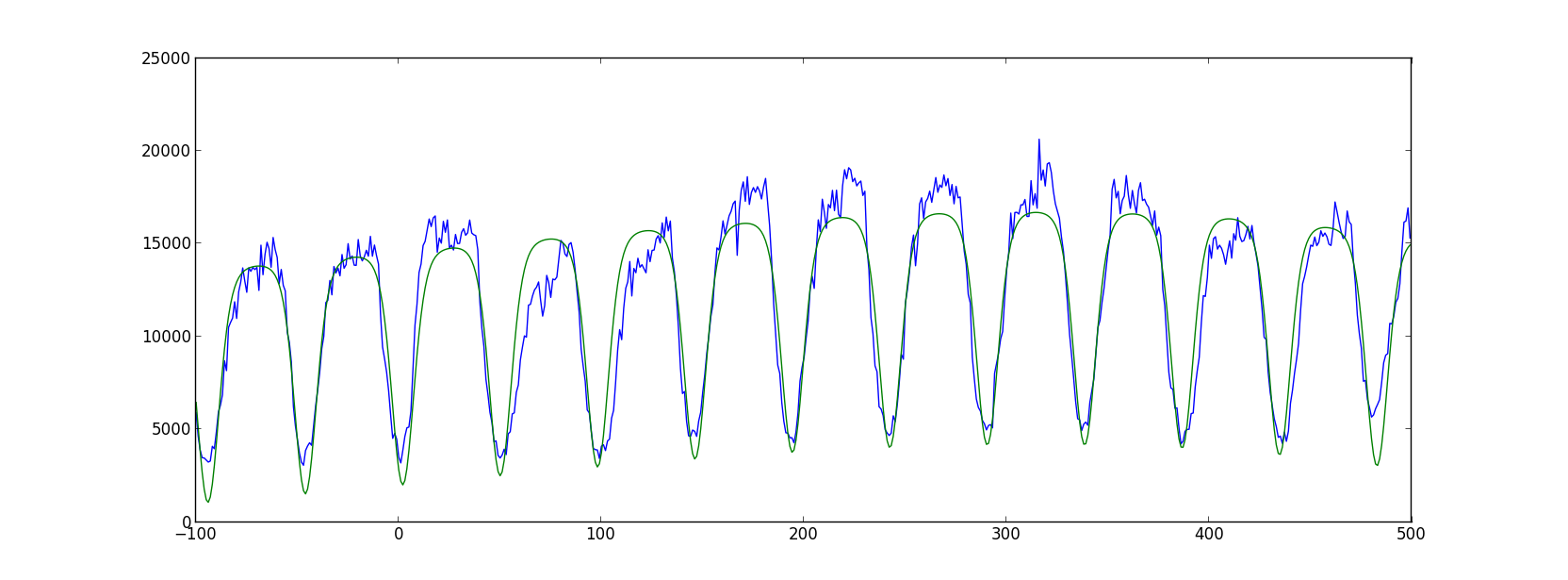Here, firstly I try to find a periodic pattern ((p[0] + p[1] * np.exp(np.sin((np.pi / p[2]) * x + p[3]))**3)) while p[i] are variatingvarying parameters, then approximatingapproximate the remains of the first regression with second, polynomial regression.
The best result that I managed to get with the method described shown in in the graphgraph:
 .
.
I'm pleased with how the fit is approaching the bottom part of the graph, but topsthe top parts I just do not like.
I think, I want to build a model which contains a periodical component, "top-trend" and "bottom-trend" components, last two are indipendentindependent.